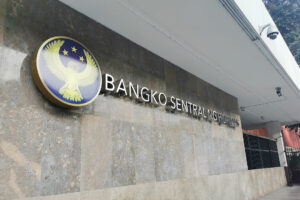BSP has room to extend pause despite Fed’s latest rate hike — economists

THE BANGKO SENTRAL ng Pilipinas (BSP) has room to extend its monetary policy tightening pause at its meeting next month, despite the narrowing interest rate differential with the US Federal Reserve, economists said.
The Fed raised the federal funds rate target range by 25 basis points (bps) to 5.25-5.5% on Wednesday, the highest level in 22 years.
“Should pressure on the peso not build to proportions seen in 2022, we believe the BSP can look past this recent rate hike by the Fed and continue to adopt a wait-and-see, data-driven approach to policy,” ING Bank N.V. Manila Senior Economist Nicholas Antonio T. Mapa said in an e-mail.
“Against the backdrop of inflation headed back towards target and an economy headed for a slowdown, we believe that there is room for the BSP to pause at the next meeting,” he added.
The Monetary Board in June paused its tightening cycle for a second meeting, keeping the key rate to a near 16-year high of 6.25%. From May 2022 to March 2023, the BSP has hiked borrowing costs by a total of 425 bps to curb inflation.
Headline inflation eased to 5.4% in June, marking a 14-month low. For the first six months of 2023, inflation averaged 7.2%. The central bank expects full-year inflation to hit 5.4% this year, still above its 2-4% target band.
Jonathan L. Ravelas, senior adviser at Reyes Tacandong & Co., said the narrower interest rate differential between the Philippines and the US could still cause some volatility in the foreign exchange market.
“As long as inflation trends lower, we could keep the pause,” Mr. Ravelas said. “But despite the falling inflation trend, risks arising from El Niño and the ongoing war keep prices of commodities elevated. These could reaccelerate inflation thus BSP could resume its hikes.”
Mr. Mapa noted the US central bank’s latest rate hike was widely anticipated and priced in by market players.
“As such, markets had a relatively muted reaction to the decision with short-end US Treasury yields actually edging lower in anticipation that this could be the last rate increase for the Fed, at least for this cycle,” he said.
Following the Fed’s rate hike decision, US Treasury yields slipped as the yield on 10-year Treasury note was down at 3.865%, while the two-year yield fell to 4.8433%.
Mr. Mapa noted the narrowing of interest rate differentials between the Philippines and the US does not always result in intense pressure on the local currency, unlike what happened last year.
“BSP Governor Eli M. Remolona indicated that last year’s peso slide could be traced to outsized concerns and anxiety about currency depreciation that did not move in line with fundamentals,” he said.
In October last year, the peso reached its record low of P59 against the dollar. It has since rebounded back to the P54 level, closing at P54.56 against the greenback on Thursday.
“Given the improved external position of the Philippines relative to last year, we believe that the peso need not suffer the same fate it did last year, even if interest rate differentials narrow further,” Mr. Mapa said.
He noted that former BSP Governor Felipe M. Medalla was able to deploy forward guidance last year by pre-announcing his decision to hike rates before the Monetary Board’s meeting in November.
“Meanwhile, Governor Remolona has said he would likely employ a similar strategy, if need be, as he appears to be a firm believer in forward guidance, having authored several papers on the topic,” he said.
“Of course, should the peso come under intense pressure in the coming weeks, the data-driven BSP will consider further tightening, as needed.”
Mr. Remolona earlier said it would be premature to talk about rate cuts this year as inflation is still elevated, emphasizing that the BSP remains data-driven in deciding which policy settings would be appropriate during this time.
China Banking Corp. Chief Economist Domini S. Velasquez said she does not expect the BSP to raise rates this year and in 2024, given slowing inflation and stable currency.
“It seems that the market will be more tolerant of a narrower interest rate differential given that central banks are at the end of the monetary tightening cycle,” Ms. Velasquez said in a Viber message.
She also noted that Fed Chair Jerome H. Powell was less hawkish compared with his statement in June. Coupled with the lower-than-expected inflation in the US last month, she said this may signal that the Fed may be done with its rate hikes.
Analysts said risks to the country’s inflation outlook include the ongoing conflict in Ukraine, and the El Niño weather event as these could lead to supply chain issues. — Keisha B. Ta-asan




